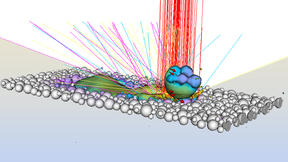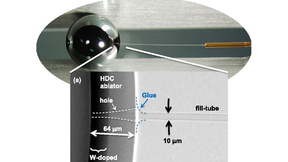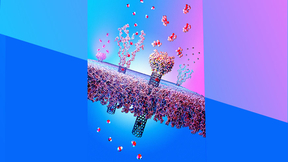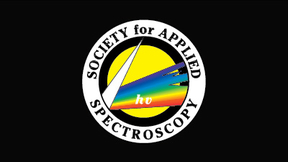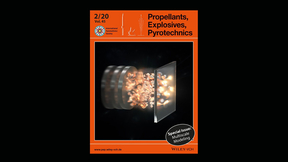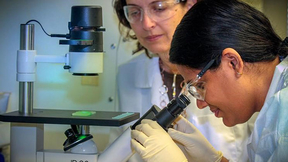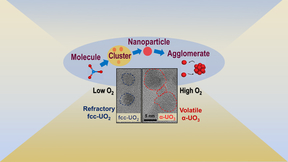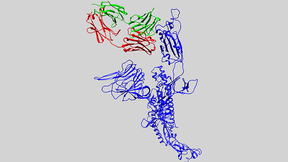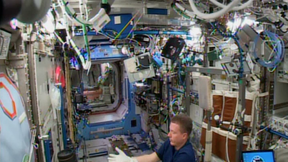Back
Physical and Life Sciences
Lab devises plan to reduce defects in 3D metal printing
Combining high-fidelity computer simulations with ultra-high-speed X-ray imaging, researchers at Lawrence Livermore National Laboratory (LLNL) have discovered a strategy for reducing or even eliminating defects in parts built through a common, laser-based metal 3D-printing process. In work published by the journal Science, a research team at LLNL, along with collaborators…
Angled Fill-Tubes Aid Quest to Raise NIF’s Implosion Performance
The tiny fill-tube used to inject NIF’s high-density carbon capsules with cryogenic fuel is also known to reduce the performance of implosions, and LLNL researchers are exploring several methods that could diminish these negative effects.
Second skin protects against chem, bio agents
Recent events such as the COVID-19 pandemic and the use of chemical weapons in the Syria conflict have provided a stark reminder of the plethora of chemical and biological threats that soldiers, medical personnel and first responders face during routine and emergency operations. Personnel safety relies on protective equipment which, unfortunately, still leaves much to be…
Carter named spectroscopy fellow
Chance Carter (MSD) has been named a fellow for the Society of Applied Spectroscopy (SAS). Fellowship is intended to recognize outstanding members for their service to the society and exceptional contributions to spectroscopy. Chance will be recognized at a special ceremony during SAS’s national meeting in October in Nevada.
Special journal issue highlights the work of LLNL energetic materials researchers
A special issue of the journal Propellants, Explosives, Pyrotechnics was recently released that highlights multiscale modeling and experiments, an area of energetic materials science and technology in which LLNL researchers have played a leading role for some time. The issue features the work of MSD’s Keo Springer, Will Bassett, Sorin Bastea, Svjetlana Stekovic,…
New study aims to reduce osteoarthritis after injury
Gaby Loots and Aimy Sebastian (both BBTD) are embarking on a new five-year research project to identify ways to prevent post-traumatic osteoarthritis (OA) in knees and other joints as part of a $2.3 million grant awarded to UC Davis by the National Institutes of Health. Previous research shows that OA, or the breakdown of cartilage and other joint tissues, can be triggered…
Perron receives TMS Young Leaders Professional Development Award
Laboratory materials scientist Aurélien Perron (MSD) was selected to receive the 2020 Young Leaders Professional Development Award from the Functional Materials Division of The Minerals, Metals, and Materials Society (TMS). This award was created to enhance the professional development of dynamic young people from the five technical divisions of TMS by helping them…
Solutions for lifetime laser damage to materials
Work by PLS scientists Jae-Hyuck Yoo and Andrew Lange (both MSD) and Engineering’s John Chesser, Steve Falabella, and Selim Elhadj was recently highlighted in Physica Status Solidi A: Applications and Materials Science as the November 2019 cover story. The research described in the article explores guidelines for designing materials with high laser damage lifetimes. To…
X-ray diffraction data informs metal additive manufacturing method
Laser powder bed fusion (LPBF) is a method of additive manufacturing characterized by the rapid scanning of a high-powered laser over a thin bed of metallic powder to create a single layer, which may then be built upon to form larger structures. Most melting, resolidification, and subsequent cooling take place at higher rates and with higher thermal gradients than in…
Controlling the structure and properties of 2D materials
Livermore’s Joel Berry (MSD) has coauthored a pair of papers describing promising methods for controlling the structure and properties of 2D materials. In one paper, Berry and his colleagues at the University of Pennsylvania and University of Chicago propose a new atomic-scale approach to form nano- to macro-patterned thin films with tailored properties (mechanical,…
Experiment improves predictions of uranium dispersion
The predictive models that describe the fate and transport of radioactive materials in the atmosphere following a nuclear incident (explosion or reactor accident) assume that uranium-bearing particulates would attain chemical equilibrium during vapor condensation. In a new study, funded by the Office of Defense Nuclear Nonproliferation Research and Development (DNN R&D…
LLNL’s new machine learning platform generates novel COVID-19 antibody sequences for experimental testing
Lawrence Livermore National Laboratory (LLNL) researchers have identified an initial set of therapeutic antibody sequences, designed in a few weeks using machine learning and supercomputing, aimed at binding and neutralizing SARS-CoV-2, the virus that causes COVID-19. The research team is performing experimental testing on the chosen antibody designs. Currently, treating…
Lab researchers, NASA find space station’s surface microbial profile resembles skin of its crew members
A study conducted by a team of national laboratory and NASA researchers has found that the environment of the International Space Station is affected by the microbial composition of the astronauts themselves. The five-year research effort represents the first study to compare the space station's environmental microbial profile (or microbiome) to an astronaut’s microbiome…
LLNL researchers salvage broken arrow samples
It was a cool spring day in May 2019. LLNL researchers Mark Hart, Matt Lyman and Salustra Urbin were combing through rusted propellers and a split Mk4 bomb case in the foothills of Manzano Mountain, just a few miles east of Kirtland Air Force Base in New Mexico. The LLNL team was exploring three different plane crashes that had occurred on the mountain, but it was the…
Controlling ion transport for energy, environment
Understanding and controlling ion transport in porous materials and at hydrophobic interfaces is critical to a wide variety of energy and environmental technologies, ranging from ion selective membranes, drug delivery and biosensing to ion batteries and supercapacitors. However, a detailed understanding of nanoscale transport is still in its infancy. For instance,…
LLNL climate scientist Karl Taylor honored with California Air Resources Board award
Longtime Lawrence Livermore National Laboratory (LLNL) climate scientist Karl Taylor has received the California Air Resources Board (CARB) Haagen-Smit Clean Air Award for 2019, also known as the "Nobel Prize" of air pollution and climate science achievements. Taylor, who is among seven winners, was cited with a commendation that his "contributions — both in building…
Lab physicist named astronomical society fellow
The American Astronomical Society (AAS) has selected Lawrence Livermore National Laboratory (LLNL) scientist Peter Beiersdorfer as a fellow in its inaugural class of this accolade. The AAS fellows program was established in 2019 to confer recognition to AAS members for achievement and extraordinary service to the field of astronomy and the American Astronomical Society…
Technique harvests waste heat from untapped sources
Thermoelectric materials convert heat to electricity or vice versa. However, their application to harvest waste heat is limited by challenges in fabrication and materials. Finding cost-effective ways to cover large and potentially complex surfaces has remained an issue but is crucial to take advantage of waste heat sources. Lawrence Livermore National Laboratory (LLNL)…
Americans used less energy in 2019
Turning those lights off when you leave has a benefit. In 2019, Americans used less energy than in 2018, according to the most recent energy flow charts released by Lawrence Livermore National Laboratory (LLNL). Each year, LLNL releases flow charts that illustrate the nation's consumption and use of energy. Americans used 100.2 quads (quadrillion BTU) of energy, which is 1…
Lab antibody, anti-viral research aids COVID-19 response
Lawrence Livermore National Laboratory (LLNL) scientists are contributing to the global fight against COVID-19 by combining artificial intelligence/machine learning, bioinformatics and supercomputing to help discover candidates for new antibodies and pharmaceutical drugs to combat the disease. See the visualization Backed by five high performance computing (HPC) clusters…


